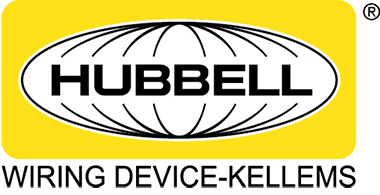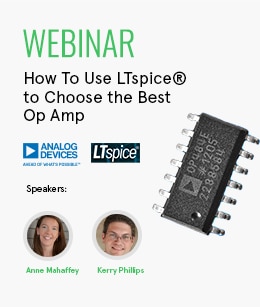What are the differences between connectors, plugs, and receptacles?
A plug is a male connection with prongs or pins that fit into a receptacle at the end of an electric cable.
A receptacle, or jack, is the female part of an electrical connection, often equipped with a flange and holes for mounting to another surface. Unlike plugs, receptacles have sockets to accommodate connecting pins.
A connector is a generic term used to describe a device or interface that allows for the connection of two or more electrical or electronic circuits. Connectors can come in various shapes, sizes, and configurations, and they are designed to join cables, wires, or other conductive elements to enable the flow of electrical signals or power between devices.
What is a locking-type receptacle?
A locking-type receptacle is an electrical outlet with a mechanism to secure the plug in place, ensuring a stable and uninterrupted connection. These receptacles utilize locking mechanisms such as twisting or latching to hold the plug securely until manually released. Locking-type receptacles are semi-permanent and cannot be easily disconnected.
What is a NEMA locking plug?
The National Electrical Manufacturers Association (or NEMA) is a governing body that establishes and regulates standards for plug and receptacle connections in the United States and other countries. NEMA locking plugs utilize a twist-lock mechanism to connect electrical devices to power outlets. NEMA locking plugs are available in a variety of configurations, including straight, angled, and panel-mount connectors. They are also available in a variety of sizes and ratings to accommodate different power requirements. These connectors are attached to the ends of cables and feature terminals that fit into receptacles and connects.
What is a locking plug for?
Locking plugs are connectors that ensure secure connections for applications such as industrial machinery, commercial appliances, data centers, and medical devices. Locking plugs have a locking mechanism that is built into the plug itself. They are designed to meet US National Electrical Manufacturers standards and provide a secure and safe connection even when twisting or other mechanical pressure is present.
What is a locking connector?
A locking connector is a mechanical device that is used to couple and uncouple two connectors, ensuring they are correctly positioned for optimal operation and maintaining electrical continuity. The locking mechanism is typically separate from the plug and the receptacle. Locking connectors also enhance the sealing performances of products by preventing accidental disconnection and keeping contaminants out.
Why would you use a locking outlet?
A locking outlet, also known as a twist-lock outlet or power lock outlet, is a type of electrical outlet that has a locking mechanism that prevents the plug from being accidentally pulled out. This is important for safety, as accidental disconnection can cause electrical shock or other hazards. Locking outlets are also used in applications where it is important to ensure that the electrical connection is secure and will not come loose due to vibration or movement. There are two main types of locking outlets:
Twist-lock outlets: These outlets have a locking mechanism that requires the plug to be twisted to lock it in place.
Push-pull outlets: These outlets have a locking mechanism that requires the plug to be pushed in and then twisted to lock it in place.
Locking outlets are typically made of durable materials, such as metal or plastic, and are designed to withstand harsh environments. They are also available in a variety of configurations, including straight, angled, and panel-mount connectors. Most locking connectors are designed for commercial and industrial use, where they prevent lighting failures, accidental disconnections, and other potential safety hazards.
What is a twist-lock connector, plug, and receptacle?
A twist-lock connector, plug, and receptacle are electrical components that require physical twisting to establish a secure connection. A twist-lock plug is designed to be twisted into a locking receptacle to prevent accidental disconnection. These connectors find use in industrial and commercial applications with an emphasis on connection security. As shown in the following products, the male connector typically has curved prongs that are inserted into the receptacle and tightened with a twist. To remove the plug, it must be turned in the opposite direction.
Why would you use a twist-lock receptacle and plug?
Twist-lock receptacles and plugs help maintain reliable connections for equipment operation. They offer quick termination, which eliminates the need for screwdrivers and torque wrenches, as well as spring termination, funnel-shaped wire entry, and an improved cord grip design. They are commonly used in the medical field, construction sites, manufacturing facilities, outdoor events with continuous machinery operation, and environments with excessive vibrations and other mechanical movement.
What is the purpose of a twist-lock plug?
Twist-lock plugs are frequently used in industrial and high-power applications, as they prevent accidental disconnections that could cause disruptions, equipment damage, or safety hazards. Their use significantly reduces the likelihood of electrical shocks, sparking, or fires resulting from loose connections.
How does a twist-lock plug work?
A twist-lock plug (Figure 2) is a type of electrical plug that requires a twisting motion to lock it into its receptacle, thus providing a secure and reliable connection.

Figure 2: Twist-lock plug (Source: Hubbell)

Figure 3: Twist-lock Plug and Receptacle Mating
As shown in Figure 3, the plug joins two pieces together by forming a tapered contact. It has a straight plug with "L" shaped curved blades. The "L" shape locks behind the receptacle face when inserted into the mating slot. When rotated, the blades slide behind the receptacle face, locking the two connectors together. To unlatch the plug, the rotation is reversed.
How do you install a twist-lock receptacle?

Figure 4: Twist-lock Receptacle, Plunger, and Assembled Wire Connect
Twist-lock connectors have a variety of installation methods. Figure 4 illustrates the installation method used by Hubbell’s Twist-Lock Edge Screwless Termination Plugs and Connectors. The device features flanged inlets and receptacles for easy termination access, eliminating the need for torque screwdrivers. Laser-etched terminal markings facilitate quick manual installation. Wire tightness is maintained with a levered spring. For installation, a conductor is inserted and the plunger is pressed towards the wire and pushed down. To remove a conductor, a screwdriver is inserted into the slot in the plunger and lifted until the plunger is released, allowing the wire to be removed.
Plungers are color-coded to correspond to each wire, eliminating confusion and simplifying installation. The internal termination adds an extra level of safety. The unique, patented design continues to apply pressure despite vibration and thermal cycling common in industrial applications, preventing wire strands from relaxing over time.
What is the difference between twist-lock and straight blade connectors?
Straight-blade connectors, such as three-prong wall outlets shown in Figure 5, require inserting or pulling to connect and disconnect a plug. Modern outlets, known as GFCI receptacles, have safety features to break electrical circuits if exposed to water or extreme heat. However, these connectors can still be disconnected due to mechanical vibrations or human error. Twist-lock receptacles, on the other hand, lock the connectors into place, requiring an added twisting motion to connect or disconnect. They are useful in medical facilities, offices, and factories where continuous power is needed. Twist-lock receptacles come in both female and male versions and vary based on factors like amps, poles, wires, and NEMA ratings.

Figure 5: Twist-lock vs Straight Blade Connectors
How do you wire a 3-prong twist-lock connector?
Connectors have a variety of wiring methods; Figure 6 and 7 illustrate the method of wiring the EdgeConnectTM screwless termination system from Hubbell. As shown in Figure 6, the metal conductive blades, also known as "prongs," are used in a plug with three color-coded wire terminals: a positive terminal (black wire), a neutral terminal (white), and a ground terminal (green wire).

Figure 6: 3-prong Twist-lock Plug

Figure 7: Inserting a wire using the plunger
To install to connector, insert a wire into the terminal and press the plunger down (Figure 7). Once the plunger is locked in the down position, the wire is terminated. Specialized tools are not required, and the connection remains tight even in high-vibration environments.
How do you use a Hubbell Twist-Lock?
In partnership with

Hubbell Twist-Lock connectors are used to establish a secure socket connection. To do this, align the twist-lock plug's prongs with the receptacle slots. The connectors are typically labeled with their NEMA configuration. Insert the plug into the receptacle and rotate clockwise to secure the connection. Pull the plug to confirm the connection is secure.
Does Hubbell make single-phase and three-phase wiring devices?
Hubbell offers single and three-phase wiring devices, however, does not manufacture two-phase wiring devices.
What is the difference between single-phase, two-phase and three-phase power?
Single-phase, two-phase, and three-phase power are different ways of distributing electrical power. The main difference between them is the number of wires used to transmit the power.
Single-phase power
Single-phase power is the most common type of electrical power used in homes and businesses. It is transmitted using two wires: one hot wire and one neutral wire. The hot wire carries the current, while the neutral wire provides a path for the current to return to the power source.
Two-phase power
Two-phase power is less common than single-phase power. It is used in some industrial and commercial applications. Two-phase power is transmitted using four wires: two hot wires and two neutral wires. The two hot wires carry currents that are 90 degrees out of phase with each other, which means that they reach their peak values at different times. This creates a rotating magnetic field, which is useful for some types of motors.
Three-phase power
Three-phase power is the most efficient way to transmit electrical power over long distances. It is used in large industrial and commercial applications, as well as in power grids. Three-phase power is transmitted using four wires: three hot wires and one neutral wire. The three hot wires carry currents that are 120 degrees out of phase with each other, which means that they reach their peak values at different times. This creates a rotating magnetic field, which is very efficient for driving motors.
What are examples of Hubbell Twist-Lock Wiring devices?
Examples of Hubbell Twist-Lock Wiring Devices include Twist-Lock Edge Series, Insulgrip Twist-Lock, Midget Twist-Lock, Safety Shroud Twist-Lock, and 50A Twist-Lock Connectors.
Click here for a catalog of additional Hubbell Twist-lock devices.









